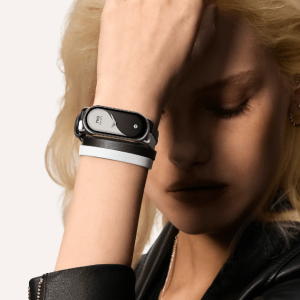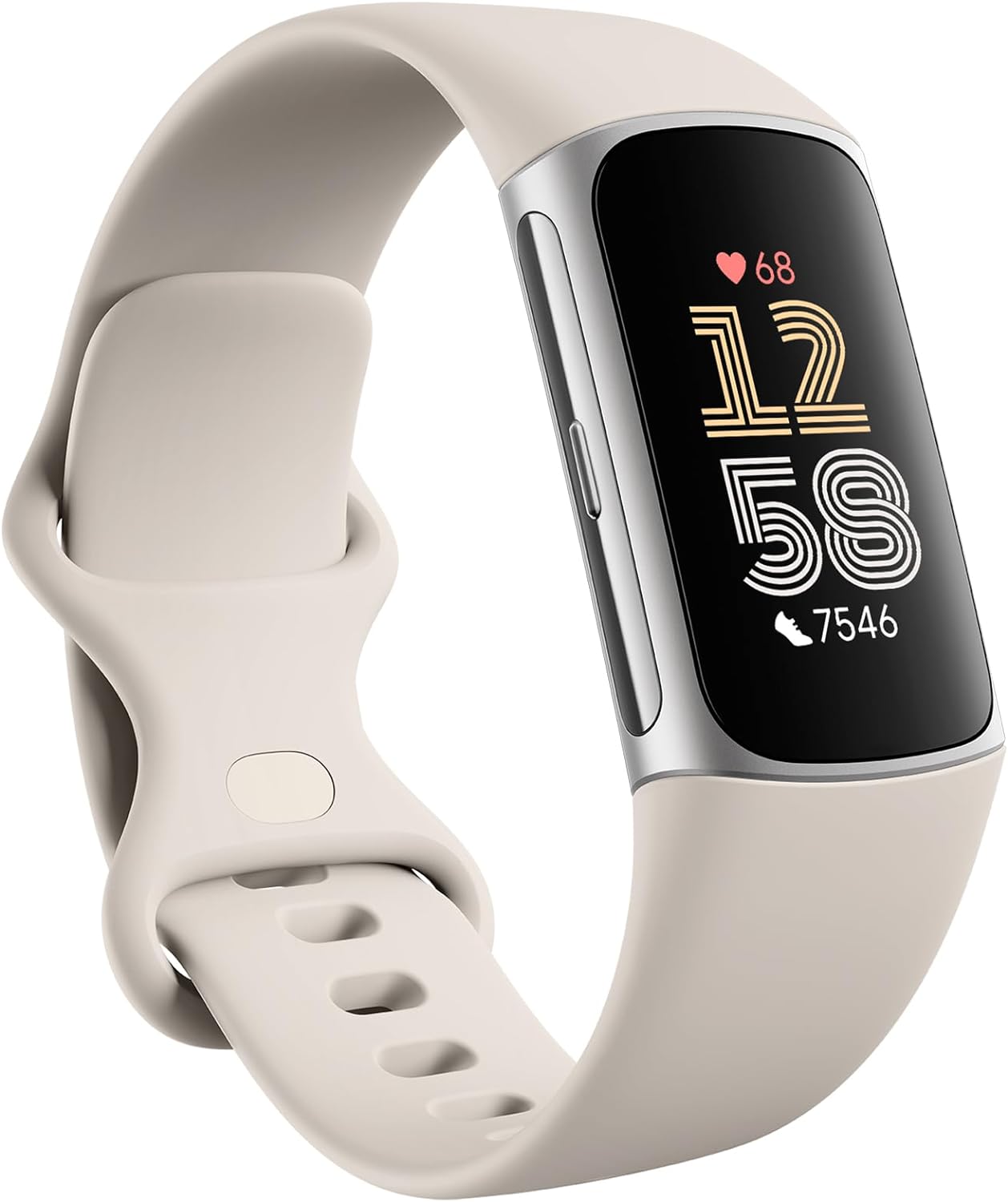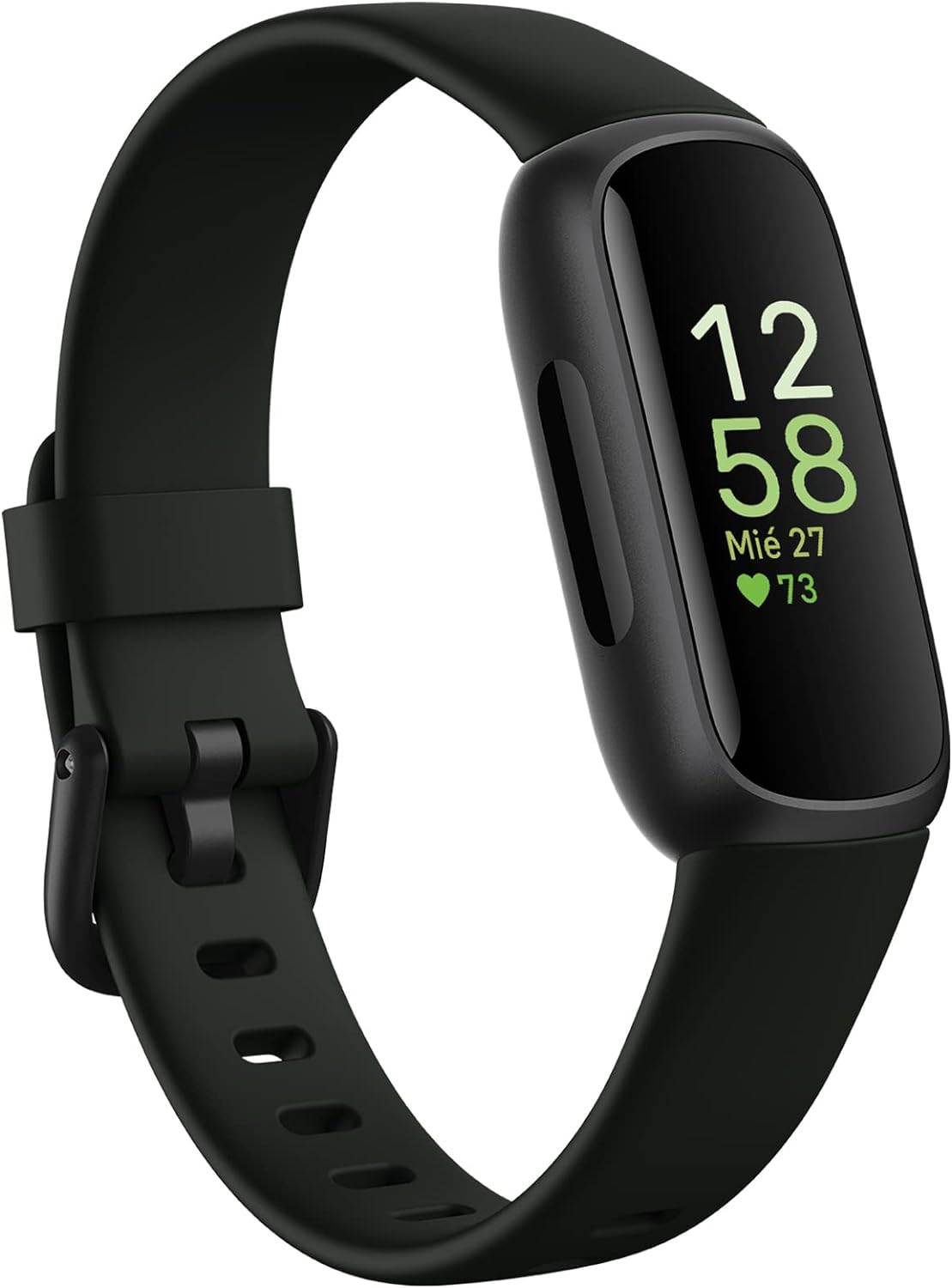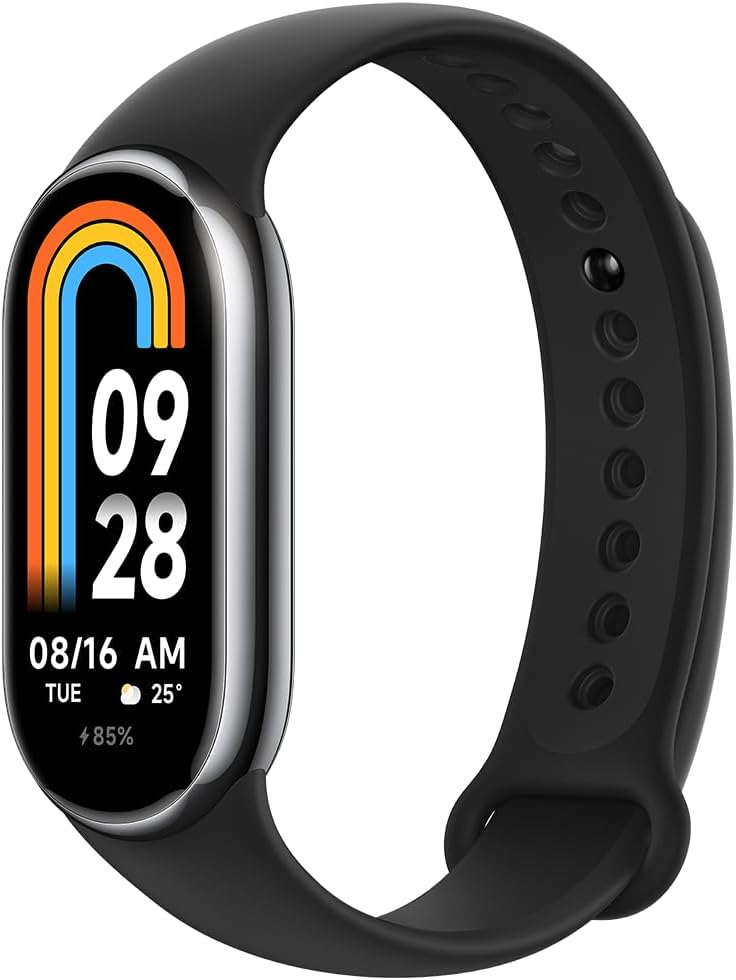|
Our favorite! Fitbit Charge 6
Screen: 1.04 inches |
Top sales! Fitbit Inspire 3
Screen: 0.7 inches |
Price quality! Mi Smart Band 8
Screen: 1.62 inches |
Activity bracelets are often confused with smartwatches, but the truth is that they are not exactly the same. In fact, it is quite common to find people who think they are looking for a smartwatch, when what would really work for them would be an activity bracelet, which are cheaper (generally). In this article, we are going to compare three of the best sellers on Amazon: Fitbit Charge 6, Fitbit Inspire 3 and Xiaomi Mi Smart Band 8.
Two of them, as you see, are from Fitbit, but there are important differences between them. Not only in terms of physical appearance, since the Fitbit Charge 6 has a larger screen and recovers the physical button. There are also differences in terms of autonomy and sports modes. The Fitbit Charge 6, for example, sacrifices a little autonomy, but doubles the variety of sports modes compared to the Fitbit Inspire 3. However, the Xiaomi Mi Smart Band 8 surpasses the two Fitbits in both parameters.
On the other hand, the Xiaomi activity bracelet does not have GPS or NFC, which makes its use more limited than that of the two Fitbits. Even so, there is another difference to take into account between these two, and that is that the Charge 6 is the only one that has integrated GPS. Later we will explain the difference between integrated and connected GPS. Likewise, the Fitbit Inspire 3 also does not have NFC, so contactless payments can only be made with the Charge 6.
In any case, the best way for you to decide which activity bracelet to keep is to analyze them in detail. Are you prepared? Keep reading!
Fitbit Charge 6 vs Fitbit Inspire 3 vs Xiaomi Mi Smart Band 8 – Comparison Table
In this table, you can check the characteristics of the three activity bracelets that we have chosen in this comparison. Later, we will detail all the differences:
(Swipe the table to see all the content)
Fitbit Charge 6
|
Fitbit Inspire 3
|
Mi Smart Band 8
|
|
| Dimensions | 36,73 x 23,09 x 11,2 mm | 39,32 x 18,6 x 11,75 mm | 48 mm x 22,5 mm x 10,99 mm |
| Weight | 30 g | 32 g | 27 g |
| Colors | Porcelain, black and coral | Ocher yellow, lavender and black | black and white |
| Belt diameter | 130-170 mm / 170-211 mm | 137-193 mm / 193-221 mm | 135-210 mm |
| Screen type | AMOLED | AMOLED | AMOLED |
| Screen size | 1,04″ | 0,7″ | 1,62″ |
| Buttons | Yes | No | No |
| Autonomy | 7 days | 10 days | 16 days |
| Loading time | 2 hours | 2 hours | 1 hour |
| Endurance | 5 ATM | 5 ATM | 5 ATM |
| Sports modes | 40 | twenty-one | 150 |
| Heart rate | Yes | Yes | Yes |
| Blood oxygen saturation | Yes | Yes | Yes |
| Stress level | Yes | Yes | Yes |
| Sleep monitoring | Yes | Yes | Yes |
| Menstrual health | Yes | Yes | Yes |
| Sensors | Skin temperature, optical heart rate, accelerometer, infrared, ambient light, electrical and vibration motor | Accelerometer, optical heart rate, infrared, ambient light, vibration motor | High-precision 6-axis photoplethysmography (PPG) heart rate and ambient light sensor |
| GPS | Yes, integrated | Yes, connected | No |
| Connectivity | Bluetooth 5.0 | Bluetooth LE | Bluetooth 5.1 |
| NFC | Yes | No | No |
| Compatibility | Android 9 or higher, iOS 15 or higher | Android 9 or higher, iOS 15 or higher | Android 6.0/iOS 12.0 and above |
Let’s review the design

Activity bracelets are those types of devices between which, at first glance, it seems that there are not many differences, when in reality there are. If we look at the two Fitbit bands, for example, we see that the Charge 6 is wider than the Inspire 3, which makes the screen larger as well. In addition, the Fitbit Charge 6 recovers the physical button that the brand had removed in the previous generation, located on the side. On the other hand, on the Fitbit Inspire 3 there are no physical buttons as such, although you can execute any control by touch.
The Xiaomi Mi Smart Band 8, for its part, is a little larger than the two Fitbits, and proof of this is that its screen is 1.6 inches, unlike the sizes of the two rival bracelets. Of course, it should be noted that all three bracelets have an AMOLED screen, and their performance in outdoor conditions is very similar in terms of visibility and brightness.
Battery life and charging time
Although Fitbit does not specify the capacity of the batteries in its bracelets, we do know how long they can last, so we can get a clearer idea. In this sense, the Fitbit Charge 6 is the one with the least autonomy (although there is an explanation), since it can last up to approximately 7 days. The Fitbit Inspire 3 raises it slightly to 10 days, while the Xiaomi Mi Smart Band 8 reaches up to 16 days (be careful, not always, it depends a lot on use).
This difference is due to the fact that the Fitbit Charge 6 is the only one of the three bracelets that has integrated GPS, a sensor that obviously consumes more battery. In terms of charging time, the Xiaomi battery charges the fastest, in one hour, while the Fitbit ones take two. Honestly, it is not a relevant difference, since a charging time of two hours is not excessive.
Are they equally waterproof?
Yes, in this sense, there are no differences between the three activity bracelets. Both the Fitbit and the Xiaomi have a resistance rating of 5 ATM, which means they can be submerged up to 50 meters. Of course, they are not suitable for practicing immersion sports, such as diving, but you can swim in a pool with them.
Sports performance: quantity or quality?

When it comes to sports performance, we have to say that Xiaomi has surprised us very positively. The Charge 6 doubles the built-in sports modes that the Fitbit Inspire 3 has, going from 20 to 40 modes. The point is that the Xiaomi bracelet has more than 150 sports modes, so it allows you to do many more sports.
Now, our advice is that you ask yourself if you are really going to make use of all these options, because the level of detail offered in Fitbit performance reports is more exhaustive. In fact, Fitbit also measures active zone minutes, intensity time, and can even intelligently recognize some sports.
That said, we must highlight a feature of the Xiaomi Mi Smart Band 8 that has fascinated us: the Pebble mode. Basically, it is a kind of chip (which you must purchase separately) that is placed on the foot and can measure up to 13 other professional running statistics. But, as you have seen, it is not included in the standard equipment.
No change in health metrics
Just as we have noticed important differences when measuring sports activity, we must say that the three activity bracelets are very similar in terms of health metrics. All of them have sensors to measure heart rate, blood oxygen saturation, stress level, sleep or to control the menstrual cycle. The Fitbit Charge 6 stands out a little from its two rivals thanks to the skin temperature sensor it has, but we cannot say that the performance is much superior.
Technology and connectivity: with or without GPS?

As we have already told you, one of the most important differences (and that most justifies the price of each bracelet) has to do with connectivity. The Xiaomi bracelet does not have GPS or NFC, that is, we cannot use it to geolocate the location or to pay contactless. The Fitbit Inspire 3 has GPS but it is connected, not integrated. That is, for it to work, you must carry your smartphone with you, because the bracelet itself does not have that sensor. What it does is synchronize with the smartphone, but that’s it.
On the other hand, the Fitbit Charge 6 does have built-in GPS. And not only that, but it gives us the option to choose which GPS we want to use so as not to lose more battery performance than necessary. Therefore, if you are a fan of outdoor sports, such as cycling, hiking or climbing, it will undoubtedly be worth your while to have an activity bracelet with GPS.
Finally, you should keep in mind that bracelets are not compatible with all smartphones. Both from Fitbit can be synchronized with Android 9, iOS 15 or higher devices. Xiaomi’s supports smartphones that are Android 6 or iOS 12 or higher, since it is a model that has been on the market for longer.
How to choose the best activity bracelet?
The choice will depend, above all, on what your level of demand is in the requirements. You have already seen that the Xiaomi Mi Smart Band 8 is the cheapest, but it has the least features and the least versatile. Therefore, if you like to practice numerous sports and want to have super complete reports, it may not be the best option. On the other hand, if you are looking for a simple activity bracelet with which you can keep a more superficial control, you will save a lot of money.
If we had to choose between one of the two Fitbits, we would lean towards the Charge 6. It is more recent, and that gives it more capacity to analyze and measure your physical condition (it incorporates an additional temperature sensor). In addition, it doubles the sports modes compared to the Inspire 3, and, although there is a price difference, it is not exorbitant. Also, keep in mind that, with the Fitbit Inspire 3, you will always have to carry your smartphone (if you don’t use GPS, you always have the Xiaomi bracelet).
Fitbit is a brand with a great reputation and track record in the smartwatches and activity bracelets market. For its part, Xiaomi has achieved a very good relationship between price and quality. Each one has its potential client, you just have to think and decide which one best suits what you are looking for.



